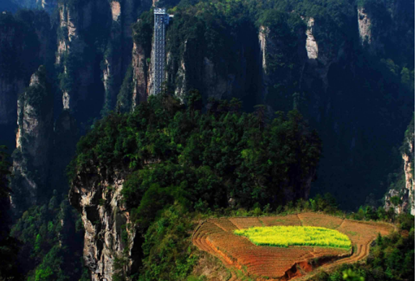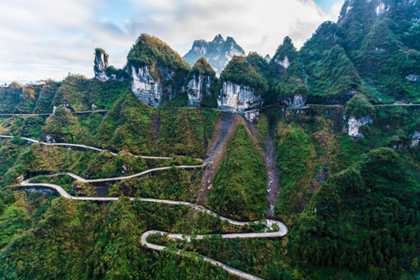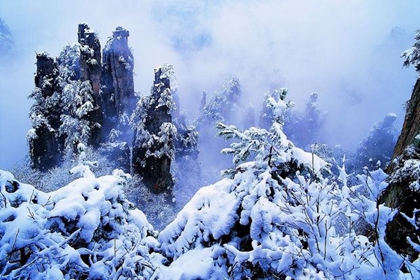info@chinaadventure.org
86-18008011324
Search
Zhangjiajie locates in south central China, sits within the continental tropical monsoon climate zone, known for its humidity. This zone experiences clear distinctions between the four seasons.
Zhangjiajie is mid-latitude, which gives the area a temperate climate. Temperatures rarely exceed 35 °C (95 °F) or fall below 0 °C (32 °F). Moderate annual rainfall peaks in June. However it can be 10 °C (18 °F) or more colder on the mountain peaks
It is foggy/rainy for over 200 days per year in Zhangjiajie, and the mists make Zhangjiajie mysterious. It might rain or be foggy (obscuring some of the view), but even then the scenery is beautiful.
Spring (April–May)
Weather: temperature 15–25 °C (59–77 °F), warming up
What to wear: long sleeves with jacket and long trousers
What to expect: The forest in April is full of vigor, leaves are verdant, buds are tender, and misty landscapes are likely to show after rain. This season is perfect for taking photographs.
Good to know: During the Labor Day holiday (May 1–3), Zhangjiajie is usually crowded with Chinese visitors. Arrange your tour well in advance.


Summer (June–August)
Weather: average highs 28–33 °C (82–91 °F), hot in the day and cool in the evening, rainy season
What to wear: t-shirt, shorts, light coat for the cool early mornings and evenings, sunglasses, sun hat, mosquito repellant, rain gear, a pair of comfortable walking shoes with good grip
What to expect: It is hot in the daytime, but you will feel cool when you are in the national park full of green trees. In the rainy days, the mountains will be surrounded by mist, creating an enchanting atmosphere.
Good to know: Heaviest crowds are in July and August, which is summer vacation in China. Book your tour in advance .


Autumn (September–November)
Weather: average highs 18–28 °C (64–82 °F), less rain
What to wear: a light sweater, hoodie, trousers
What to expect: Most of the national forest in Zhangjiajieis evergreen. Wolongling (卧龙岭) in Tianzi Mountain and Yaozi Village (鹞子寨) are the two best places to see fall foliage.
Good to know: During the Chinese National Day holiday (October 1–7), the prices for tours and hotels increase by 50–100%. Do book as far in advance as you can.


Winter (December–March)
Weather: average temperature range 3–10 °C (37–50 °F), sometimes snowy/icy
What to wear: warm and windproof clothes
What to expect: The panoramas of snow-covered mountains can make winters special. The most likely time to see snow scenery in the mountains is from mid January to late February. There are a few heavy snow falls at that time every year.
Good to know: It is cold in the mountains, with slippery roads, so access may be restricted. There are also far fewer tourists in winter so the main sites are less crowded. Prices of hotels are lower than in peak season.


we’ll reply you in 24 hours!
Copyright © 2012-2024 All Rights Reserved to chinaadventure.org